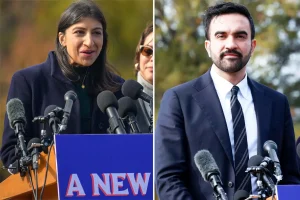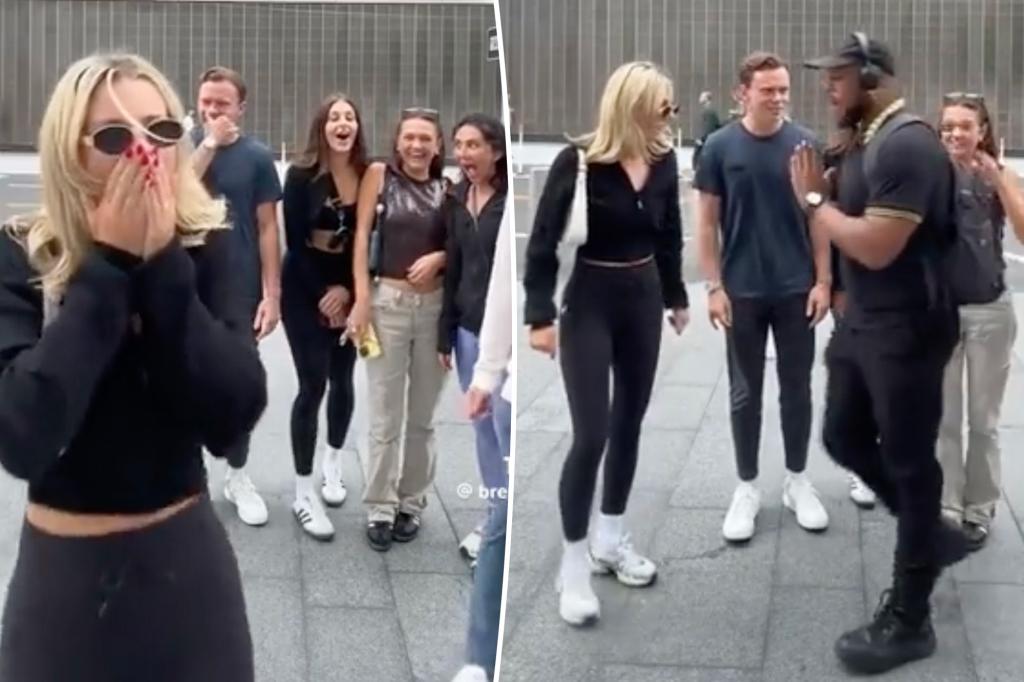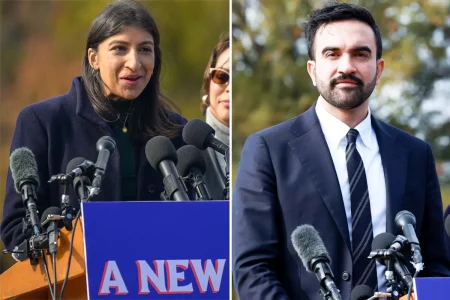TikTok vs. NYC: The Growing Tension Between Content Creators and City Dwellers
In the bustling streets of New York City, a familiar scene is playing out with increasing frequency: groups of young content creators blocking sidewalks and public spaces to capture the perfect shot, while frustrated locals try to navigate around them. A recently viral video exemplifies this growing tension, showing the moment when New York’s infamous directness collided with social media obliviousness.
The now-deleted TikTok video, originally posted by user @brennatesta, captured a group of young people backing up into a busy Manhattan sidewalk to fit everyone in frame for a photo. As pedestrians attempted to navigate around them, one exasperated New Yorker finally voiced what many were thinking: “Alright, you guys just all walked backwards while people are walking f–king forwards!” The content creators, seemingly unaware of their disruption, merely giggled among themselves. When reposted to Reddit’s TikTokCringe subreddit, the video ignited over 1,000 comments, most supporting the frustrated pedestrian. “Welcome to NYC, now get the f–k out,” read the top comment, while another explained more thoroughly: “This is the specific kind of tourist s–t that New Yorkers hate…This is disrespectful to everyone, not just residents trying to get to f–king work.”
While New Yorkers have long had a complicated relationship with tourists who walk slowly or stop suddenly to photograph landmarks, the social media era has amplified these tensions to unprecedented levels. Content creators aren’t just taking quick photos – they’re setting up elaborate shoots, conducting impromptu interviews with strangers, and staging pranks in highly trafficked areas. Many locals feel their city is increasingly being treated as a backdrop for viral content rather than a living, working environment where millions actually conduct their daily lives. The frustration stems not just from the physical obstruction but from what many perceive as a fundamental lack of respect for shared public space and local norms.
Washington Square Park has become a prime battleground in this cultural clash. Once cherished by locals as a relatively peaceful urban oasis, the park has transformed into a hotspot for “shock jock-style” interviews, random pop quizzes, and staged pranks – all designed to generate views and engagement online. “Washington Square Park is known for being unhinged, and I love it. But now, it’s unhinged in an annoying way,” 22-year-old Julia Martin told The New York Post. “They’re here and causing a scene.” The transformation has been particularly jarring for long-time visitors and former NYU students who remember the park’s previous atmosphere. Brooklyn resident Alex Loucks, 24, described the change as “crazy,” noting how dramatically different the space feels compared to her college days.
The omnipresence of cameras has created a new kind of urban anxiety. Many New Yorkers now report feeling on edge in formerly relaxed public spaces, knowing they might unwittingly become content for someone else’s social media account. “There’s so many people coming to, like, interview you,” Loucks explained. “I don’t mind it – it’s just that we see it a lot. I’m just here for the sun, I’m here to chill. I feel like you have to be ‘on’ rather than just, like, hanging out at the park with some friends.” This sentiment captures a profound shift in how public space functions in the digital age – parks and sidewalks are no longer just physical locations but potential stages for content creation, leaving many locals feeling like unwilling extras in someone else’s production.
The tension between content creators and city dwellers represents something deeper than mere annoyance over blocked sidewalks. It highlights fundamental questions about urban etiquette, the privatization of public space, and how technology is reshaping our shared environments. As social media continues to blur the lines between personal expression and public disruption, cities like New York find themselves at a crossroads. The viral sidewalk confrontation, while brief, encapsulates a larger struggle over who has the right to define how urban spaces should be used and what constitutes respectful behavior in a densely populated environment. For now, the clash between New York’s fast-paced pedestrian culture and the staged spontaneity of social media content creation shows no signs of resolution – just an ongoing negotiation playing out on sidewalks and in parks, one irritated comment at a time.











